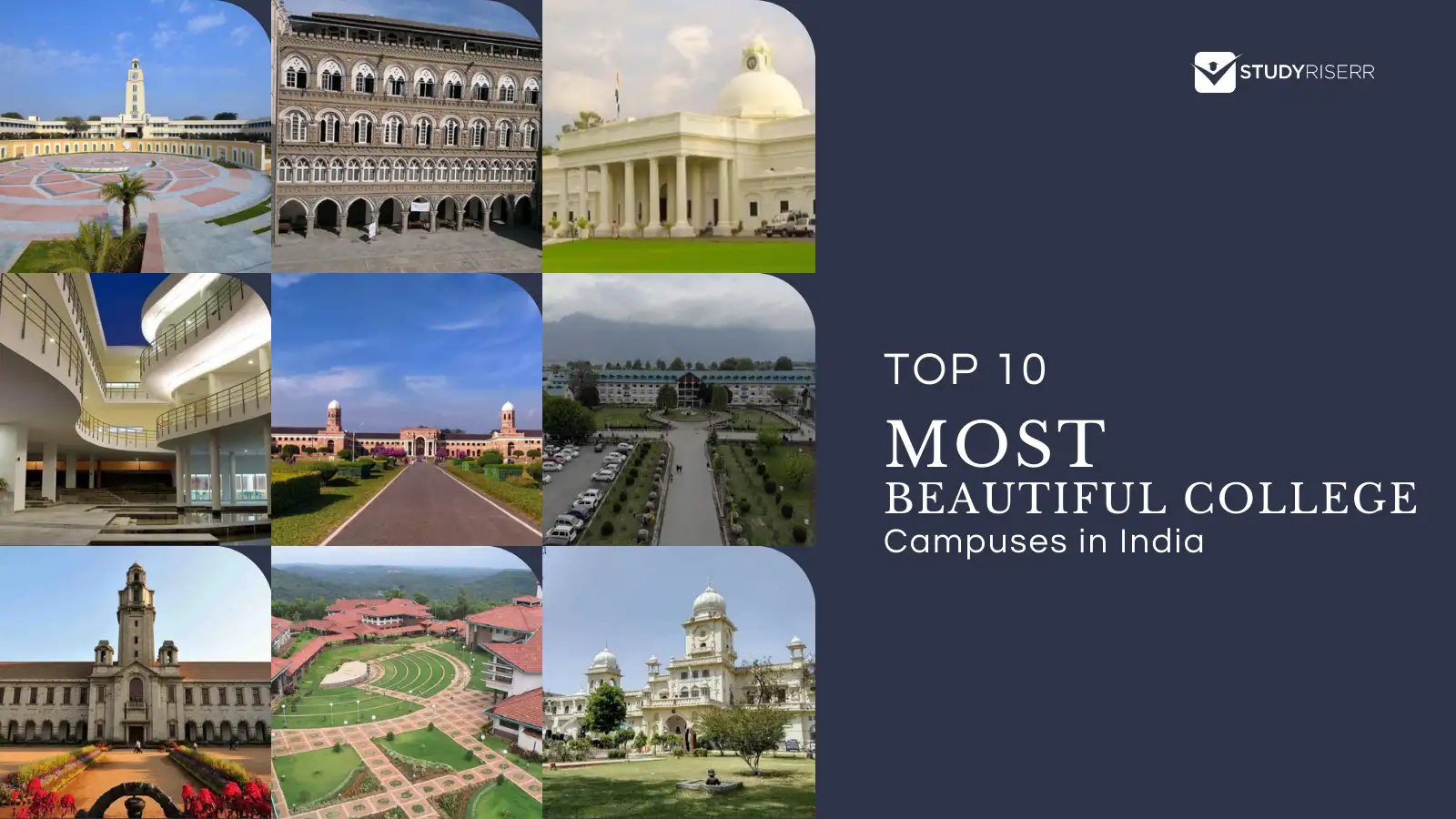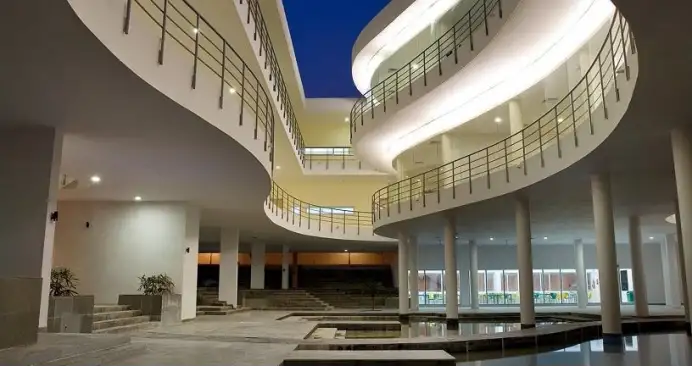India is home to some of the most stunning college campuses that not only offer academic excellence but also architectural beauty and natural serenity. From the colonial grandeur of the Forest Research Institute in Dehradun to the sustainable design of Pearl Academy in Jaipur, each campus reflects a unique blend of history, innovation, and cultural influence. Institutions like BITS Pilani and IISc Bengaluru stand as beacons of scientific and technological progress, while places like St. Xavier's College in Mumbai and King George's Medical University in Lucknow echo the legacy of heritage and Indo-Saracenic elegance. Set amidst lush greenery, mountain backdrops, and serene water bodies, these campuses provide an environment that nurtures both the intellect and the soul. Whether located in the heart of a bustling city or nestled in remote scenic landscapes, these 10 college campuses represent the finest India has to offer in terms of educational infrastructure and aesthetic excellence.


The Forest Research Institute (FRI), located in Dehradun, Uttarakhand, is one of India's oldest and most prestigious institutions dedicated to forestry research. Established in 1878 as the Forest School, it now spans 450 hectares of lush forest land in the scenic Doon Valley, with the Siwalik Hills forming a picturesque backdrop. Designed by architect C.G. Blomfield, the institute is famed for its grand Greco-Roman colonial-style architecture, making it not only a center of academic excellence but also a popular shooting location for Bollywood films like Student of the Year (2012) and Rehna Hai Tere Dil Mein (2001).

The Birla Institute of Technology and Science (BITS), Pilani, situated in Rajasthan's Jhunjhunu district, stands as a top-tier academic hub known for its thoughtfully designed, eco-conscious campus that merges innovation with greenery. With its beautifully landscaped gardens, a unique Saraswati temple, and natural lighting through terrace skylights, the campus architecture offers both aesthetic appeal and functionality. Known as one of the most eco-friendly campuses in India, BITS Pilani actively promotes green living through rooftop solar panels, battery-operated campus vehicles, water recycling systems, and the use of energy-efficient LED lighting.

Founded in 1993, Pearl Academy, Jaipur showcases a stunning blend of sustainability and style. Its campus seamlessly combines elements of traditional Indo-Islamic and Rajasthani architecture with sleek modern aesthetics, creating a visually inspiring educational environment. Designed by Morphogenesis, the campus is located in the arid Kukas industrial area and spans approximately 1.2 hectares. It draws inspiration from traditional features like baolis (stepwells) and jaalis (perforated stone screens), incorporating self-shading courtyards and thermal underbellies to naturally regulate temperature. This innovative fusion of heritage and modern design earned the academy the prestigious World's Best Learning Building award at the World Architecture Festival (WAF) Awards in 2009, held in Barcelona, Spain.

St. Xavier's College, established in 1869, is a heritage institution in Mumbai celebrated for its stunning Indo-Gothic architecture and rich legacy. Recognized by the Mumbai Heritage Conservation Committee, the college features an in-house museum housing rare and historic books, a unique green retreat called "The Woods" filled with lush tree plantations, and an auditorium with intriguing secret underground passages. Spread across 1.18 hectares, the campus is also known for its eco-friendly initiatives, including effective water conservation and waste management practices, making it a model of sustainability within an urban setting.

Spread across 260 hectares, the Indian School of Business (ISB) in Hyderabad boasts one of India's most stunning campuses, seamlessly blending contemporary architecture with natural surroundings. The campus features elegant brick buildings nestled under tree canopies, natural boulders, a 500-seat auditorium, and an open-air atrium that enhances its serene charm. Designed with sustainability in mind, the campus emphasizes efficiency and minimal space wastage, mirroring the eco-conscious layout of its Mohali counterpart. The Mohali campus, spread over 70 acres, further enhances ISB's commitment to green living, with LEED-rated structures that harmonize simplicity and nature's beauty.

The Indian Institute of Science (IISc), Bengaluru, established in 1909, is a premier institution founded through the vision of industrialist and philanthropist Jamsetji Nusserwanji Tata to advance scientific education and research in India. Spanning 150 hectares, the campus reflects European functional architecture crafted under the guidance of German architect Otto Koenigsberger, who designed key structures such as the dining hall, auditorium, and India's first closed-circuit wind tunnel. Over the years, IISc has nurtured some of India's greatest scientific minds, including Vikram Sarabhai, Homi J. Bhabha, and CNR Rao, cementing its legacy as a cradle of innovation and academic excellence.

The Indian Institute of Technology (IIT) Roorkee, originally established as The Roorkee College in 1847 during British rule, is one of the oldest engineering institutions in India. In 2001, it was elevated to the status of an IIT, marking its recognition as an institute of national importance. Nestled in the serene town of Roorkee at the foothills of the Himalayas, the 141.6-hectare campus is a harmonious blend of modern infrastructure and historic charm. The James Thomason building, a prime administrative structure built in Renaissance style, forms a striking quadrangle and offers views of the distant snow-covered Himalayan peaks.

Perched atop the twin hills of Kunnamangalam in Kerala's Kozhikode district, the Indian Institute of Management Kozhikode (IIM Kozhikode) offers not only academic excellence but also breathtaking natural surroundings, making it one of the most picturesque B-schools in India. Spanning over 45.5 hectares, the campus offers a harmonious blend of modern infrastructure and natural beauty, set against the lush backdrop of the Western Ghats. Renowned for its serene environment and state-of-the-art facilities, IIM Kozhikode provides an enriching and immersive learning experience that appeals to both the intellect and the senses.

The National Institute of Technology (NIT) Srinagar, established in 1960, is nestled in the heart of the Kashmir Valley along the scenic banks of Dal Lake. Surrounded by the majestic Himalayan and Zabarwan Hills, with the revered Hazratbal shrine located to its north, the campus is often regarded as one of the most beautiful in India. Spanning 27.1 hectares, it boasts lush greenery, thoughtfully landscaped gardens, and peaceful tree-lined paths that offer serenity year-round. During winter, the campus transforms into a breathtaking snowy retreat, with frozen lake views and snow-draped peaks creating a truly magical atmosphere.

King George's Medical University (KGMU), Lucknow reflects regal charm and historic significance through its majestic Mughal-Gothic architecture, fusing Islamic influences with European styles to form a campus that is as visually rich as it is academically prestigious. Initiated by a proposal from the Maharaja of Vijaynagaram, its foundation stone was laid in 1906 by the then Prince of Wales, King George V, and it became fully operational as a medical college by 1911. Designed by Sir Swinton Jacob, the campus showcases the Indo-Saracenic architectural style a unique blend of Islamic and Neo-European design. Its elegant structure features curved roofs, minarets, intricate jharokhas, and screened windows, making it not only a premier medical institution but also a cultural landmark of Lucknow.
Read More:
Ans: Architectural diversity celebrates India’s pluralistic heritage. It showcases how modern education can coexist with traditional values. Whether it’s Mughal, Rajasthani, Gothic, or Greco-Roman, each style brings a unique flavor that reflects local identity, educational philosophy, and historical context.
Ans: Beautiful, green, and well-planned campuses have been proven to reduce stress, improve concentration, and foster creativity. A visually pleasant environment provides a sense of peace, belonging, and pride, which can directly impact academic performance and overall student satisfaction.
Ans: While primarily academic institutions, many of these campuses (like FRI Dehradun and St. Xavier’s College) attract tourists due to their architectural and natural beauty. Some are filming sites or heritage buildings, while others may allow guided tours or public events, promoting community interaction.
Get the inside scoop on all major educational updates with Studyriserr. Stay informed on board exams, entrance exams, recruitment exams, and college admissions with Studyriserr News. Be the first to know important dates, admission processes, cutoff, career opportunities, and more. Studyriserr.com — The Education Edge You Need.
Talk to an expert at Studyriserr
Get College Notifications, Exam Notifications and News Updates